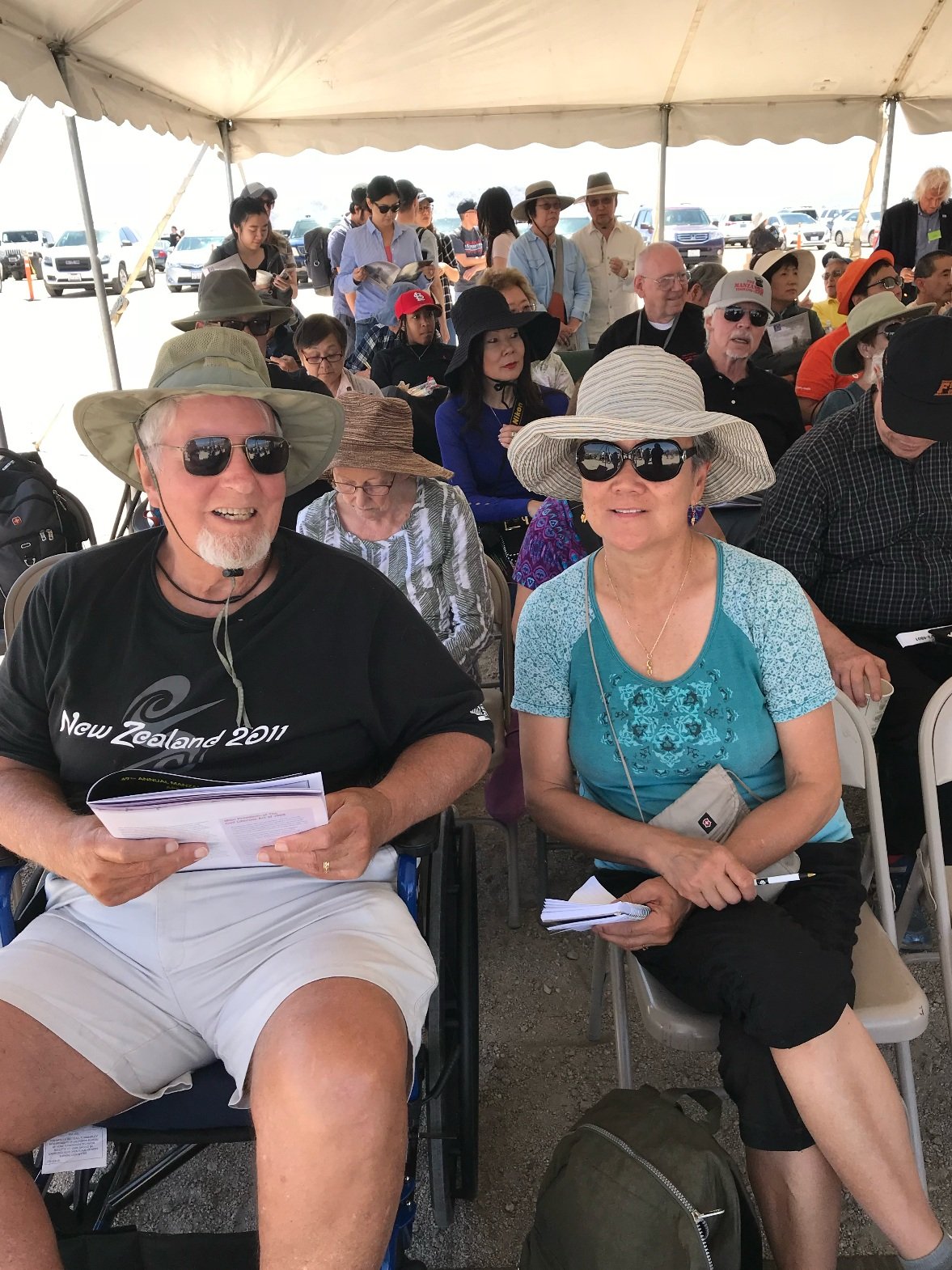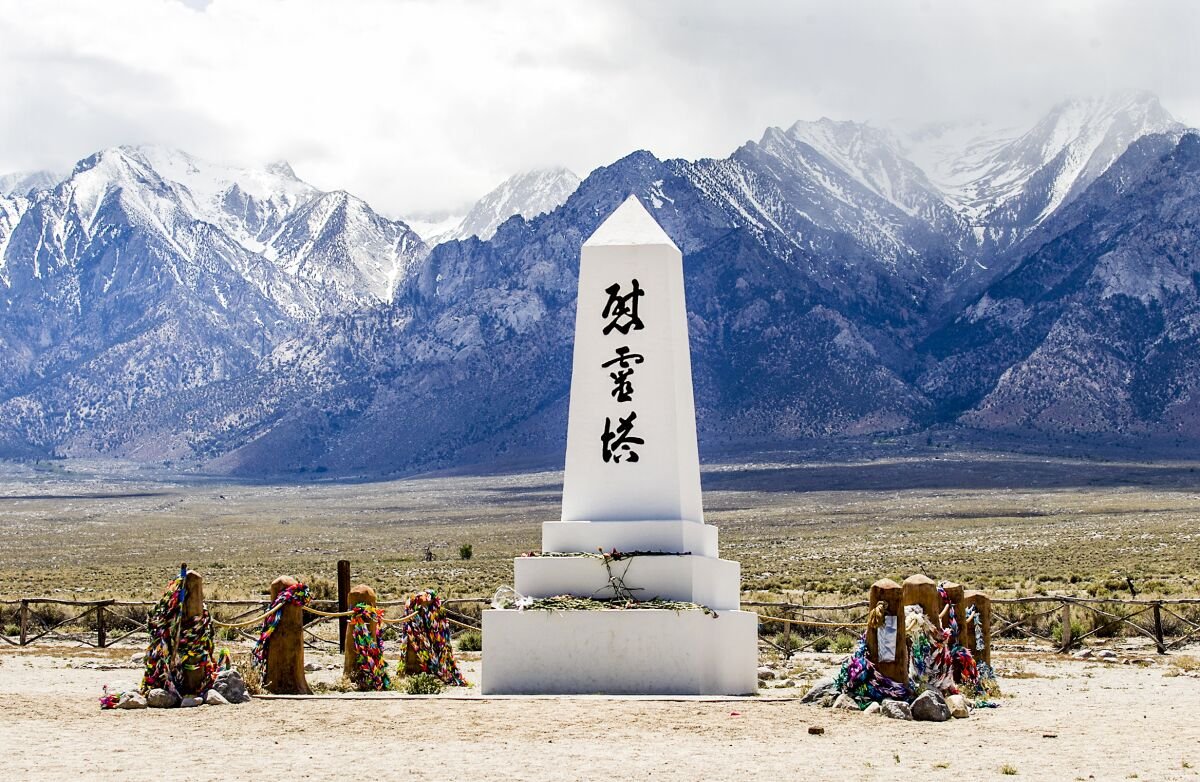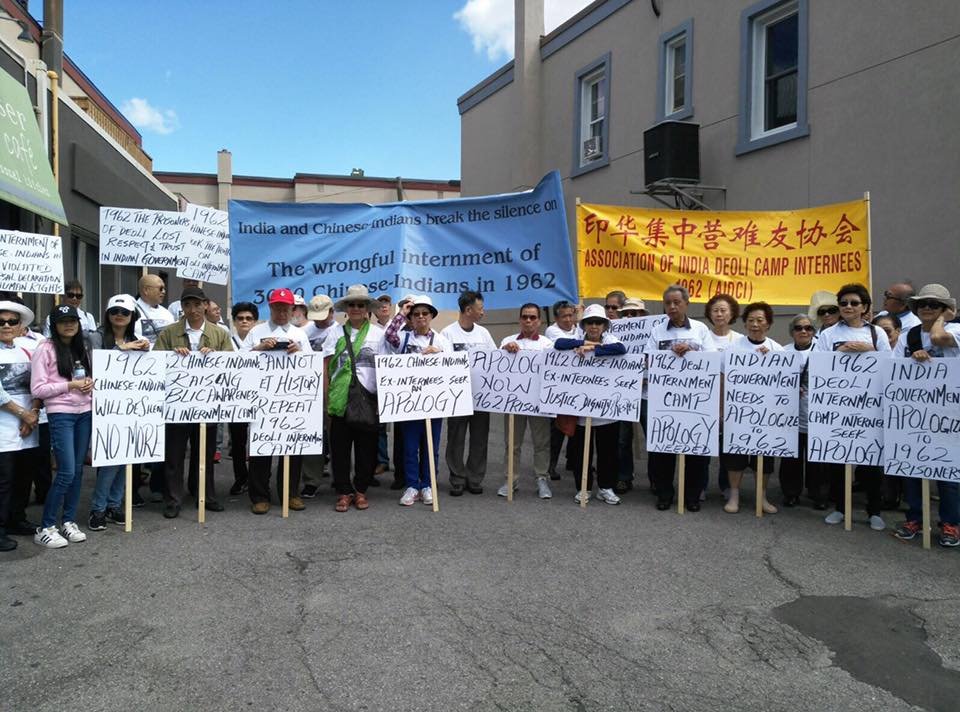A Deoli Internee’s Pilgrimage to Manzanar
By Yin Marsh
On April 27, 2018, my husband and I left our home in the morning and began our long drive to visit Manzanar, one of the ten Japanese-American internment camps located in the California high desert. Manzanar is now a national historic site, to participate in the annual commemoration of the Japanese-American internment during WWII. The 7-and-a-half-hour drive gave me plenty of time to reflect on our journey.
I had been planning this journey for a long time.
Shortly after I had written my memoir, Doing Time with Nehru, now six years ago, I attended a talk given by several Japanese-American internees. I picked up a memoir, Farewell to Manzanar, written in 1973 by Jeanne Wakatsuki, a Japanese-American woman. She was seven when she and her family were interned in Manzanar. It was amazing to read how parallel our stories are. I have wanted to visit this particular camp because this was where the author was interned.
The second reason I wanted to visit the internment camp at Manzanar was because we heard that Indian journalists independently tried to visit the internment camp at Deoli, India, where I was interned as a thirteen-year-old, and they were turned away. So, if they were turned away, Chinese-Indians would definitely not be allowed to visit Deoli.
This year, my thoughts drifted back to Manzanar. I had learned that the Japanese internees have their annual commemoration of the internment in April. By rescheduling our plans my husband and I were able to make the trip. The drive from the Bay Area would take seven and a half hours since the Tioga Pass through the Sierras is still closed in April.
Yin Marsh (right) and husband Noel (left) at Manzanar National Historic Site in April, 2018. - photo from Yin Marsh
Desolate and distant
4-and-a-half-hours after we left the mostly flat landscape, we started climbing up into the mountains and arrived the town of Lone Pine where we had booked to stay for two nights. Lone Pine is situated at 4,000 ft. in a stunningly beautiful and yet desolate valley between the Sierra Nevada on the West and Inyo Mountains on the East. Manzanar is located 11 miles north of Lone Pine and 11 miles to the south of the town of Independence.
The winters here are extremely cold, and summers are very hot, and it is windy much of the time. It was the perfect place for the U.S. government to set up an internment camp since an escapee could hardly survive.
The camp was built in 1942 and torn down after WWII ended in 1945. It took years of persistence by a handful of Japanese internees and Manzanar was finally turned into a national historic site in 1992. A few replicas like a couple of barracks, the women’s latrine and a guard tower were built to give the public an idea of how life was there during those years. There is, of course, a visitor’s center built on the entry to the grounds which houses photographs, videos, and films depicting the plight of the Japanese-Americans after Japan and the U.S. went to war. The internees felt that this painful period in American history must have continuous public awareness, to be taught in schools and to be included in textbooks so that it will not be repeated.ce and improve an understanding of the effects of incarceration.
Manzanar: Lone Pine Chamber of Commerce. - photo from online Source.
“Protected” by guard towers
As we approached Manzanar, the next morning, April 28, the first thing that came into sight was the guard tower. This immediately brought memories to the forefront. To me, there has always been something ominous about seeing pictures of guard towers, and here was an actual replica. It gave me goosebumps. As I continued looking around at the vastness and desolateness of the camp, it bought back vivid memories of my own experience before our arrest in Darjeeling, India and our time in the Deoli Internment Camp.
A great feeling of sadness overcame me; how life can change so drastically in an instant. There were over 10,000 people interned here on one square mile.
Guard tower: Manzanar National Historic Site, California. - photo from online source.
Commemorating
Scheduled events were to begin at 11:30 AM and as the time drew closer, more people started arriving. By about 1:00 PM there must have been over 1000 people in attendance to celebrate, not only the 47th annual pilgrimage to Manzanar, and also to celebrate the 30th anniversary of the Civil Liberties Act of 1988 when Japanese-Americans were finally given an official apology and the internees given reparations.
It took the U.S. government 46 years to do this. It was impressive to see the numbers of people who came from all over the U.S. to celebrate this day. There were five generations of Japanese-Americans that gathered to remember and to continue to pass down the history of what had happened to them. There were also others, non-Japanese, in attendance who were wronged by their own governments and wanted to show solidarity, like the Native Americans, Central Americans, South Africans, and myself, a Chinese-Indian.
Manzanar National Historic Site. - photo from Yin Marsh.
Manzanar and Deoli
The similarities between the internments of the Japanese-Americans and the Chinese-Indians are remarkable. Both groups were taken suddenly and arrested without cause other than they were of the ethnic group the country was at war with. Both were sent far away from home and put into internment camps. Both groups lost properties, homes, identities, and were made to feel ashamed and humiliated. Both groups lost trust in their governments. And both kept silent for decades.
The differences however between the Japanese-American and the Chinese-Indian situations are remarkable and why, I believe, finally moved the U.S. government to make the formal apology.
1. There were over 110,000 Japanese-Americans incarcerated as opposed to 3,000 Chinese-Indians.
2. Most of the Japanese internees remained in the U.S. after their release, whereas the majority of the Chinese internees left India to start life over in other countries.
3. The Japanese internees had strong advocates in Congress like Daniel Inouye, Senator from Hawaii and a war hero.
Yin Marsh and AIDCI protesting at the High Commission of India, Ottawa, Ontario in 2017.
A long road ahead
As we continue our efforts to address the wrongs inflicted on the Chinese-Indians in Deoli we struggle with distance, relevance and focus. Seeking justice and an apology is a long game. And we are alone in our struggle. This is our story and we need to continue to make the public awareness of what happened to us even if it takes one person at a time, or a small group at a time.
Editor's note: Yin wrote her article originally in April 2018.
Facebook: @voicesofdeoli
Twitter: @voicesofdeoli
Instagram: voices_of_deoli




